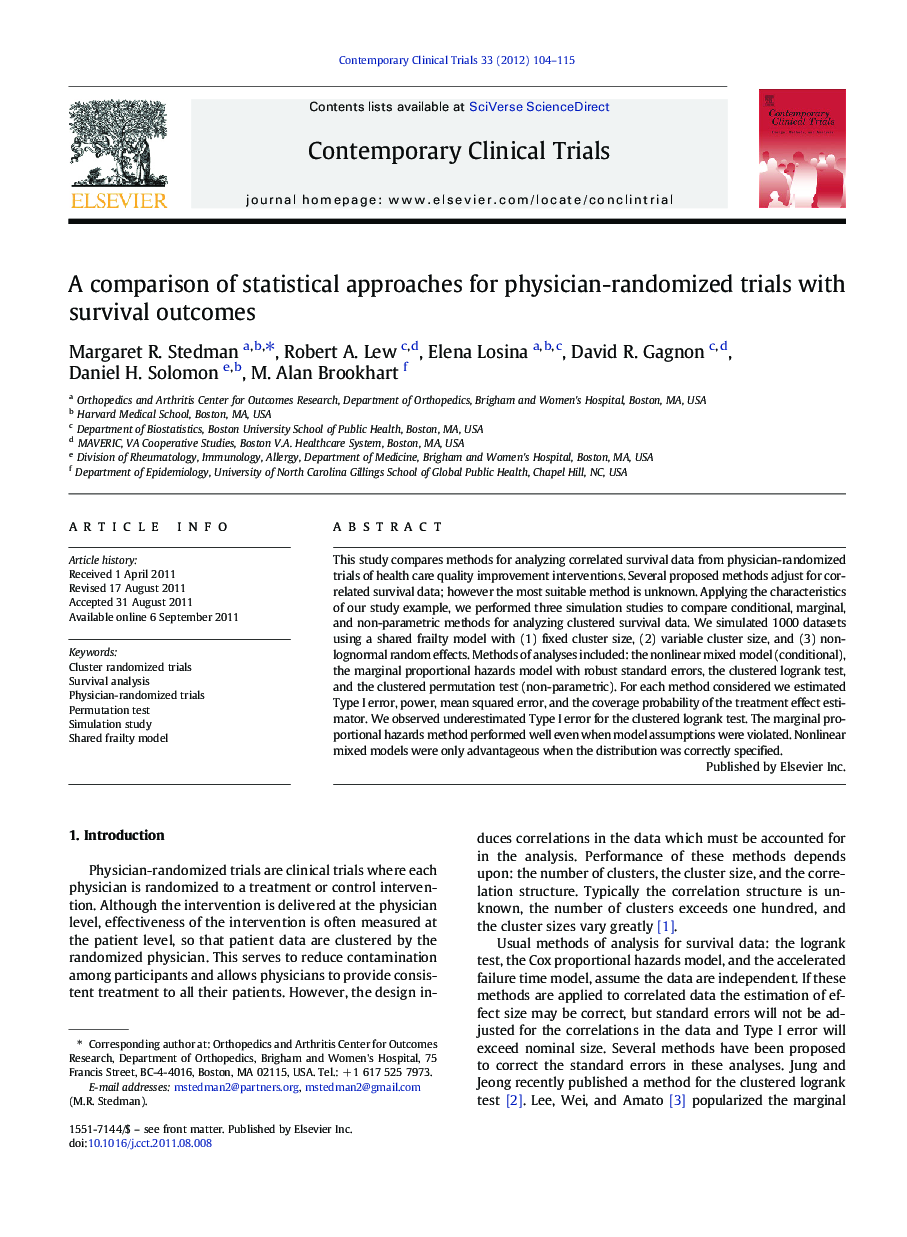| Article ID | Journal | Published Year | Pages | File Type |
|---|---|---|---|---|
| 3462864 | Contemporary Clinical Trials | 2012 | 12 Pages |
This study compares methods for analyzing correlated survival data from physician-randomized trials of health care quality improvement interventions. Several proposed methods adjust for correlated survival data; however the most suitable method is unknown. Applying the characteristics of our study example, we performed three simulation studies to compare conditional, marginal, and non-parametric methods for analyzing clustered survival data. We simulated 1000 datasets using a shared frailty model with (1) fixed cluster size, (2) variable cluster size, and (3) non-lognormal random effects. Methods of analyses included: the nonlinear mixed model (conditional), the marginal proportional hazards model with robust standard errors, the clustered logrank test, and the clustered permutation test (non-parametric). For each method considered we estimated Type I error, power, mean squared error, and the coverage probability of the treatment effect estimator. We observed underestimated Type I error for the clustered logrank test. The marginal proportional hazards method performed well even when model assumptions were violated. Nonlinear mixed models were only advantageous when the distribution was correctly specified.
